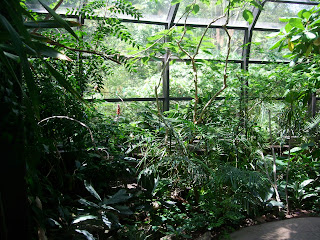The Great Hunt
Thursday, June 2, 2011
Courtship: Nature Center 5/29/11
Turtles court each other when the male massages the female with its fore claws, and female turtles usually pick a male with nice long fingernails.
Thigmotropism: Porter Creek 5/26/11
The ivy in this picture is growing up the tree truck because of thigmotropism. Thigmotropism occurs when an organism grows in response to touch or stimuli. In this case, the tree provides that stimuli, causing the ivy to grow on it.
3 Levels of Biodiversity: Zoo 5/20/11
This is a picture from the rain forest at the zoo. The rain forest is the most diverse environment found on earth. The three levels of biodiversity include genetic, species, and ecosystem. In this picture many different plant species are represented, and their genes are different as well. An ecosystem in the rain forest is much different than that of the tundra, or a desert.
Cryptic Coloration: Nature Center 5/29/11
Cryptic coloration is a type of camouflage. These stick bugs are the same color as the stems of plants in their environment. This helps them blend into their environment and hide from prey.
Water Cycle Components: Zoo 5/20/11
The water cycle consists of many different processes including evaporation and transpiration, condensation, precipitation, and collection. This is a picture of water evaporation; the water is turning into vapor and being released into the atmosphere. Condensation then occurs in the clouds where the water vapor turns back into a liquid. The water in a liquid form then will precipitate and fall back to the ground. Collection is when the water gathers together on the ground in oceans and lakes and can result from runoff.
Tertiary Consumer: Nature Center 5/29/11
This hawk is a tertiary consumer because it eats secondary consumers. Hawks can eat snakes which are secondary consumers.
Subscribe to:
Comments (Atom)






